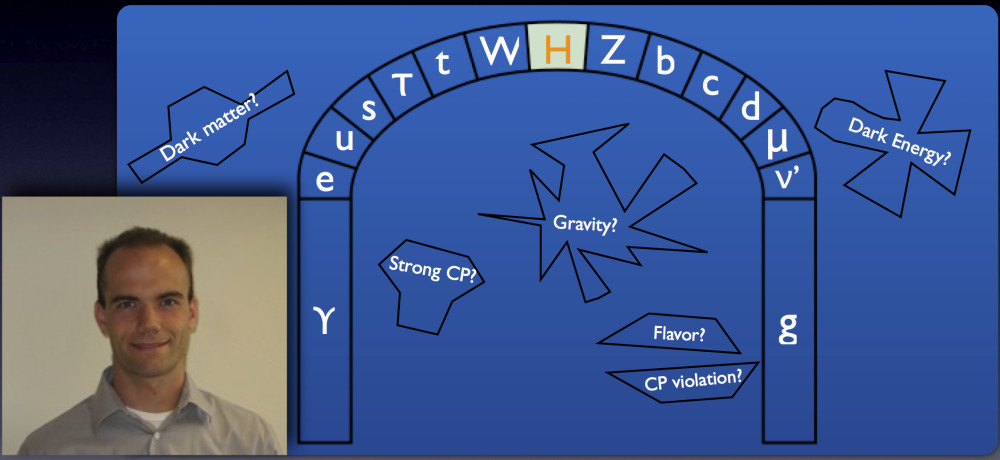We are now in the most exciting time for particle physics in decades, with the Large Hadron Collider (LHC) at CERN shining a bright spotlight on the energy frontier. The primary target of our explorations is to elucidate the mechanism of electroweak symmetry breaking, or the manner in which the electromagnetic forces dynamically become distinct from the weak force responsible for radioactive decays. Referred to broadly as the “Higgs Mechanism,” this process explains (in a mathematically consistent way) why electromagnetism is a long range force similar to gravity, while the weak force only works at sub-atomic distance scales.
A host of other puzzles abound. Why are the masses of particles we see spread over such a large hierarchy of scales? The electron is about a million times lighter than the top quark! How did the matter–anti-matter asymmetry arise? What is dark matter? Why are all the masses we see 100,000,000,000,000,000 times smaller than the scale associated with gravity? Many of these puzzles are linked directly to the specifics of the Higgs mechanism, and so there is hope that the LHC will provide some pieces that help us uncover the greatest puzzle of this generation.
